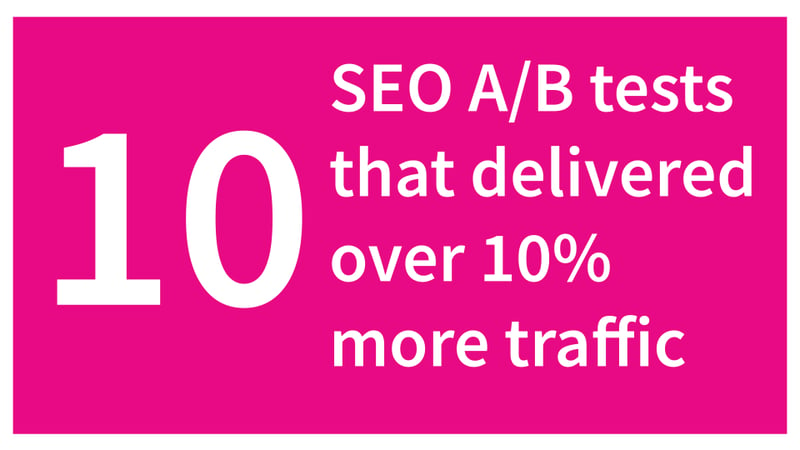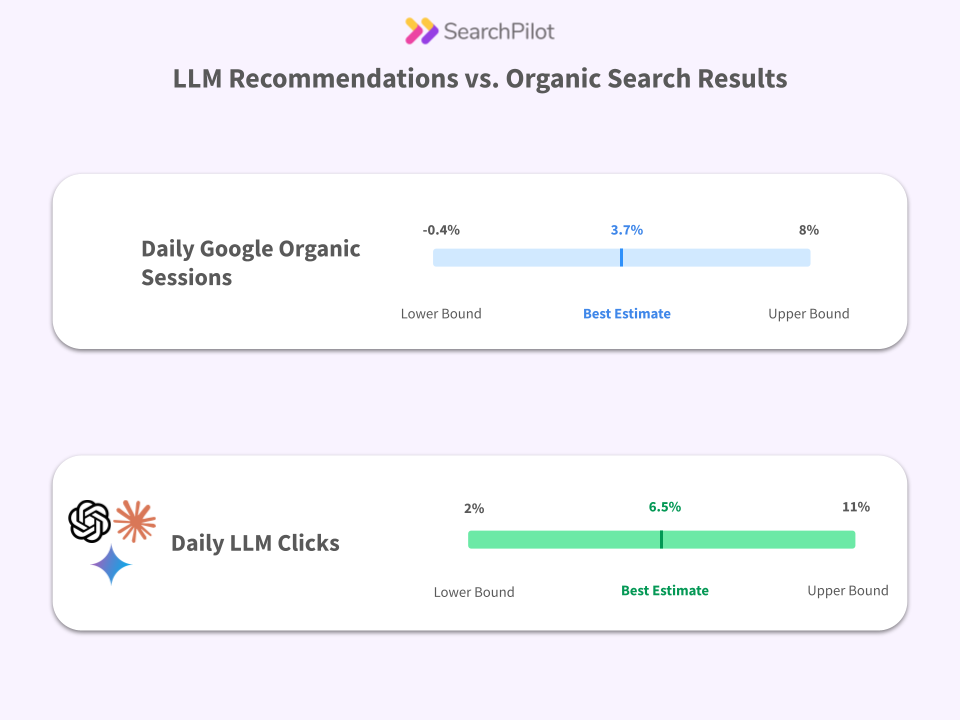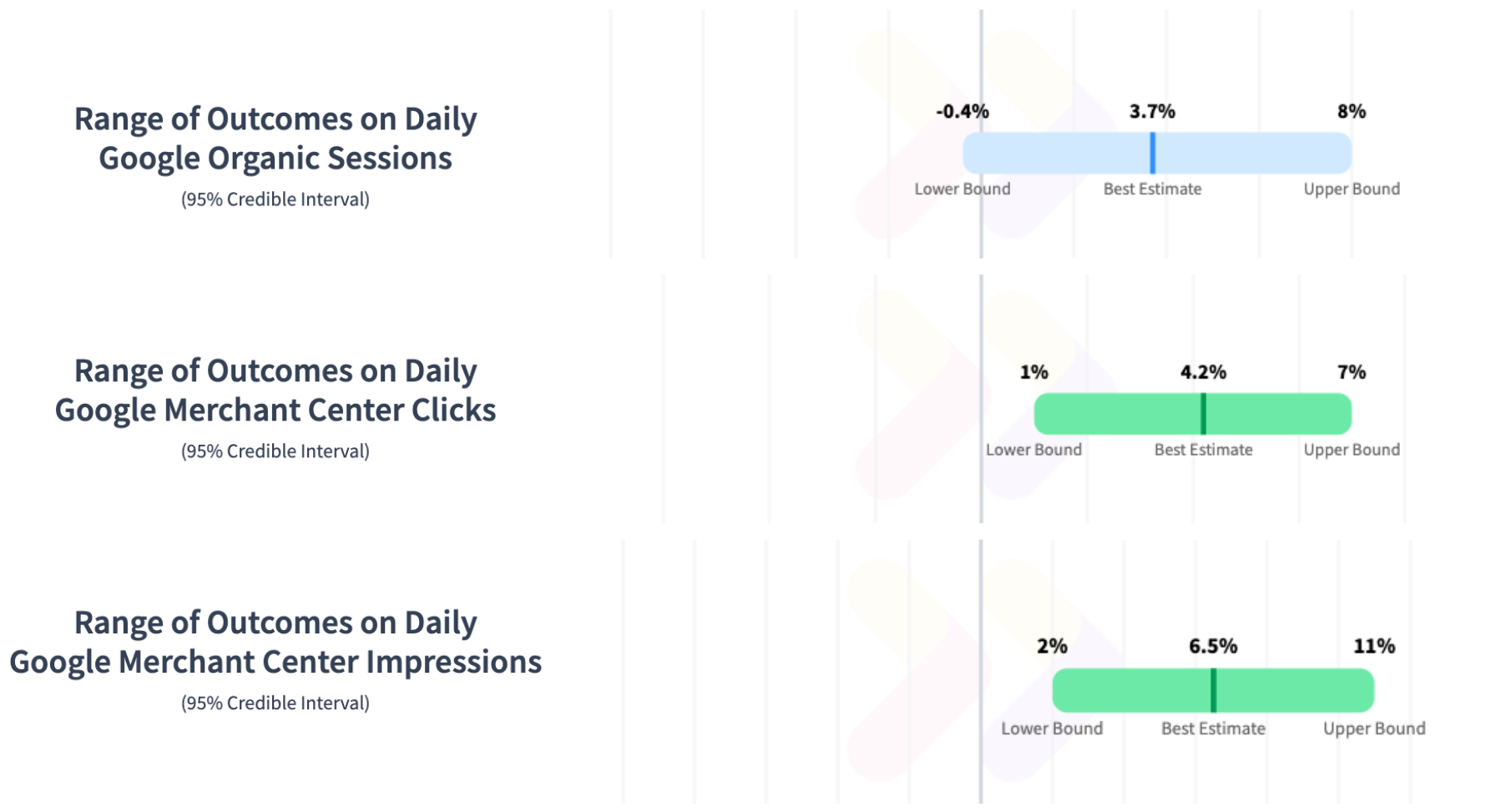Just because something worked for one site doesn’t mean it will work for you. Nevertheless, seeing what has worked for others can be fun and inspiring. Here are 10 SEO A/B tests that have all had a positive impact of at least 10%, with one bonus 11th test at the end that increased traffic by 50%. Enjoy.
1 - Does the position of your brand in title tags matter?
Should your brand name be at the start or end of your title tags? Like a lot of things, it depends. If you have a well-known brand, having your brand at the front might help with recognition and trust, but it might also come with the trade-off of moving keywords to the back of the title. This customer was a well-known brand with local retail stores. In their case, moving their brand to the front of the title increased organic traffic by over 15%. For further details, you can read the full case study where should the brand appear in title tags?
2 - Adding dynamic pricing to title tags
This travel customer wanted to know if adding pricing information to their title tags would increase organic traffic. The test was done in two parts. Firstly they tested adding static pricing, for example, “from $300”. This resulted in a drop of 7%. As a follow-up to this, they tested making the pricing information dynamic so that the titles would change with real-time price changes. This had the opposite impact and increased traffic by 10%. This would suggest that Google cares that the information presented in the search results is as accurate as possible. For more details, you can read the full case study should you add price information to title tags.
3 - How unique does content need to be?
Trying to scale content while keeping the quality high can be hard. Not to mention expensive. In this case study, a customer tested removing templated content and replacing it with unique human-written content. In their case, it seems like the extra effort is worth it because it increased traffic to those pages by 14%. This is a great example of why SEO A/B testing is so valuable. They could then use this information to make a case for more budget to get unique content written for the remaining pages. For more insights, you can read the full case study is unique content better than templated content.
4 - Highlighting freshness in title tags
We've previously seen positive results from adding dates and/or years to title tags to show freshness, but this test tried to take that one step further by adding "Updated Daily" in the title tags of a listings website. The test was positive and had an estimated impact of 11%. For more details, read the full case study, can improving freshness signals in titles benefit SEO?
Get your PDF copy of these test ideas ⬇️
5 - Shortening title tags
For years many SEO reporting tools have flagged titles that were too long as a warning. But is it really a big deal? This case study tested shortening title tags and removing certain keywords on a travel site. This was particularly interesting because the test was on a travel site and one of the ways they shortened the titles was to remove words like “find” and “book” from titles. That could be considered high risk if you don’t have a testing tool like SearchPilot. The goal was to see if shortening title tags would ensure that prices were shown in the title. The test resulted in an increase of 11%. You can read the full case study here are shorter titles better for SEO?
6 - Bringing content out of tabs
Whether content is shown by default to the user can have an impact on your organic traffic. For instance, in this case study, the customer wanted to test bringing product descriptions out of tabs. Instead of being in tabs, the content was moved above the fold. The hypothesis was that since the content was in tabs that required JavaScript to render it, Google may find it easier to understand if the content was shown by default and without the need for JS. The impact was an increase of 14% for desktop users. You can read the full case study Does Adding Product Descriptions "Above The Fold" Improve SEO?
7 - Removing a product carousel
Product carousels can be visually appealing, but at what cost? This e-commerce customer wanted to test removing the carousel on their category pages. The hypothesis was that the carousel could be slowing down the site and even showing outdated content. They must have been onto something because this increased the organic traffic to the test section by an estimated 29%. This would have been an ideal example to run as a full-funnel test (SEO and CRO testing at the same time), as a change like this clearly impacts users and search engines. Read the case study here does removing a product carousel improve organic traffic?
8 - Changing H2s into questions
H1 tags usually get all the attention in SEO, so this is an interesting case study where an e-commerce customer tested changing the H2s of their product pages from “Summary of Features” to “What are the Features of [Product Name]?”. Rephrasing H2s into questions on product pages resulted in an estimated increase of 12%. The hypothesis was that the customer might be able to capture more question queries rather than just product searches. For more details, you can read the full case study can rephrasing H2’s into questions help boost organic traffic?
9 - Adding ‘Best’ into title tags
This editorial site wanted to see if they could increase their click-through rates by adding “The Best” to their titles. For instance, instead of “Basketball tips: Read up on our basketball tips,” they changed it to “The Best Basketball Tips…”. This change was respected in the search results and resulted in a 10% increase in click-through rates. For more insights, you can read the full case study can incorporating ‘the best’ into your title tag improve organic traffic?
10 - Adding AI-generated content
In this case study, a travel company tested the impact of AI-generated content on organic traffic in the United States and Australia. The AI reworked informational text to see if it could drive more traffic. The result was a significant 13% increase in the US, but an inconclusive outcome in Australia, highlighting the variability of results across different markets. This underscores the importance of market-specific testing and adjustments in content strategy. For further details, you can view the full case study will adding AI-generated content to pages improve organic traffic?
Bonus - Adding pros and cons to product pages
As a user, I really appreciate when I see sites that offer pros and cons content. It makes my job easier, and I think it makes me trust that site more. This customer was a comparison website and added a pros and cons table to their content. The result was very surprising. It resulted in an increase of 50% to those pages. There are a few extra details that are interesting about this case study, so head over to the full case study to learn more, adding Pros and Cons to Offer Pages.
Interested to see it in action?
If this blog post has piqued your curiosity and you want to see a live walkthrough of how this works on our platform. Drop us a line here.





